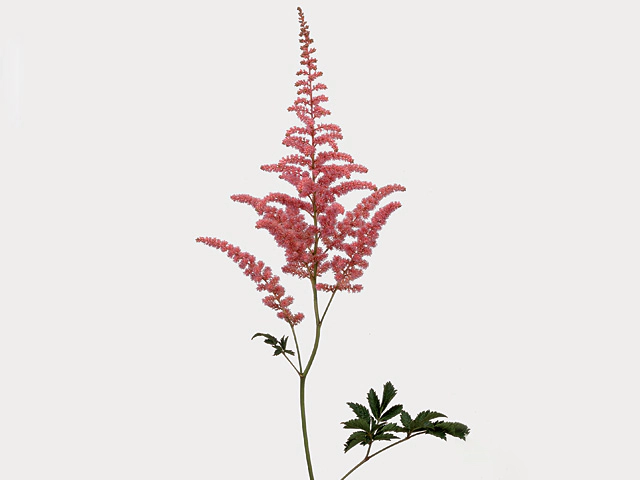Astilbe (Arendsii Grp) 'Cattleya'

| Leaf type | Foliage leaf |
| Flower color | Purple-light violet-077C |
| Soil fertility | Special demands |
| Structure (tissues) | Woody |
| soil pH requirement | Neutral (pH 6,5 - 7,5) |
| Light conditions | Semi-shades |
| Leaf division | Pinnate |
| Plant, growth type | Erect |
| Flower color distribution | Bicolored |
| Soil type | Humus rich |
Astilbe (Arendsii Grp) 'Cattleya', also known as False Goat's Beard, is a stunning flowering plant that is native to gardens around the world. Offering beautiful foliage and vibrant purple-light violet flowers, it adds a touch of elegance to any landscape.
One of the first things to note about Astilbe 'Cattleya' is its foliage leaf, which adds to its overall charm. The leaves are pinnate, meaning they have multiple leaflets attached to a central stalk, creating an interesting and textured appearance. This leaf structure gives the plant a woody structure, making it durable and able to withstand different elements.
When it comes to flower color, Astilbe 'Cattleya' is a showstopper. Its purple-light violet blooms are captivating, and they are bi-colored, adding hints of contrasting shades that make the plant truly eye-catching. These vibrant flowers are distributed throughout the plant, creating a beautiful display when in bloom.
In terms of soil fertility, Astilbe 'Cattleya' has special demands. It prefers soil that is humus-rich, providing it with the necessary nutrients to thrive. Additionally, it requires a neutral soil pH, with a range of 6.5 to 7.5. Ensuring that the soil conditions meet these requirements will help the plant grow and flourish.
In terms of light conditions, Astilbe 'Cattleya' prefers semi-shade areas. It thrives in spaces where it receives partial sunlight and shade, allowing it to avoid extreme temperatures and direct sunlight.
Growth-wise, Astilbe 'Cattleya' is an erect plant, meaning it grows upwards. This growth type adds height and structure to your garden, creating a visually appealing landscape.
To cultivate and care for Astilbe 'Cattleya', it is crucial to consider its special demands. Planting it in humus-rich soil with a neutral pH will provide it with the necessary nutrients. Additionally, it is essential to position it in semi-shade areas, avoiding direct sunlight. Regular watering and occasional fertilization will further support its growth and overall health.
In conclusion, Astilbe (Arendsii Grp) 'Cattleya' is a fantastic addition to any garden. Its unique foliage, vibrant purple-light violet flowers, and special demands make it a standout plant. By understanding its preferences and providing it with the necessary care, you can enjoy its beauty and elegance in your landscape for years to come.
Market availability index by month:
| Jan. | Feb. | Mar. | Apr. | May | Jun. | Jul. | Aug. | Sep. | Oct. | Nov. | Dec. |
|---|---|---|---|---|---|---|---|---|---|---|---|
| 1 | 1 | 1 | 2 | 3 | 2 | 4 | 3 | 3 | 3 | 1 | 1 |